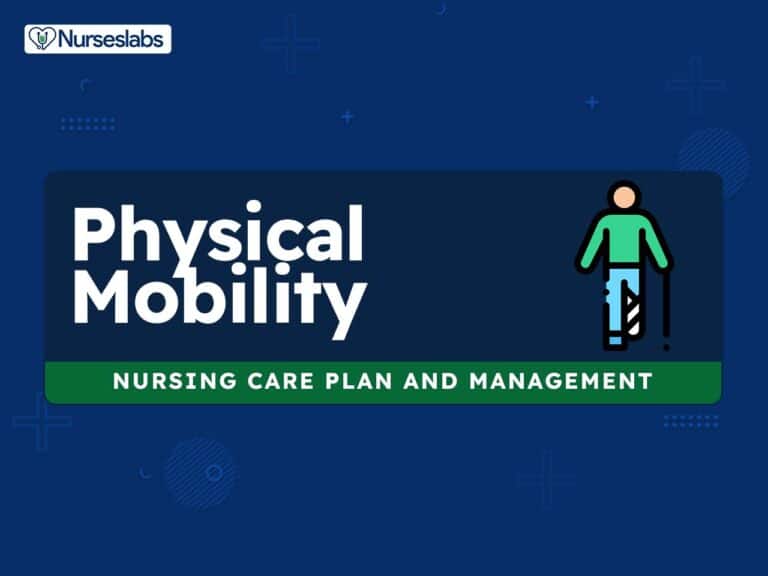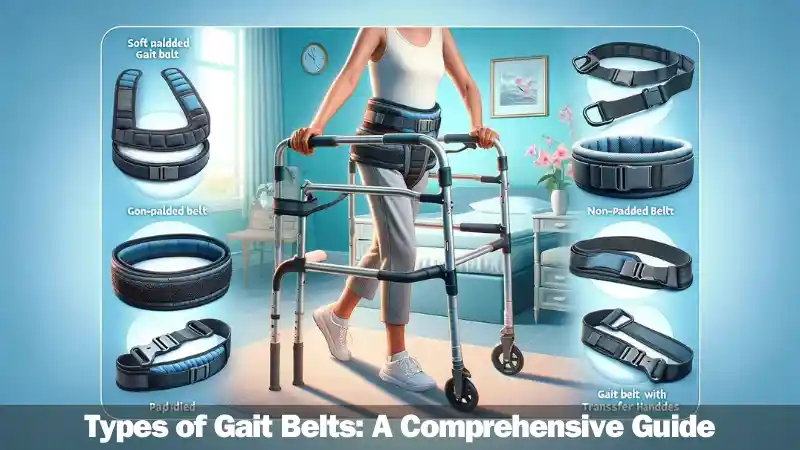Types of Gait Belts: A Comprehensive Guide
Gait belts are used to assist individuals with walking or transferring. The main types of gait belts include padded, non-padded, and transfer handles.
Gait belts are essential tools for caregivers and healthcare professionals to provide support and assistance to individuals with mobility challenges. These belts come in various types, each designed to cater to specific needs. Padded gait belts offer extra comfort and support, while non-padded gait belts are more lightweight and versatile.
Transfer handles are designed with additional handles for easier gripping and maneuvering. Understanding the different types of gait belts and their unique features is crucial for ensuring the safety and comfort of those who require assistance with mobility. This article will explore the various types of gait belts and their uses in caregiving and medical settings.
Standard Gait Belts
Standard gait belts are an essential tool for caregivers and medical professionals to assist patients with mobility and transfers. These belts are typically made from durable materials, providing stability and support for individuals who may have difficulty standing or walking independently. There are several types of standard gait belts available, each with its unique features and benefits.
Nylon Gait Belts
Nylon gait belts are popular for their strength, flexibility, and easy maintenance. They are ideal for individuals requiring moderate to maximum assistance during transfers.
The smooth texture of nylon allows for easy maneuvering and sliding, making it a preferred choice for caregivers. Additionally, nylon gait belts are often adjustable, ensuring a secure fit for the patient.
Cotton Gait Belts
Cotton gait belts are known for their softness and comfort, making them suitable for patients with sensitive skin. These belts provide a gentle yet secure grip, promoting a sense of safety and reassurance during transfers. Cotton gait belts are available in various colors and designs, adding a touch of personalization to the caregiving experience.
Leather Gait Belts
Leather gait belts offer durability and long-lasting support. The sturdy construction of leather provides reliable assistance for individuals with higher mobility needs.
These belts are easy to clean and maintain, contributing to their longevity and practicality in caregiving settings. Additionally, leather gait belts exude a classic and professional appearance.
Padded Gait Belts
Padded gait belts provide added comfort and support for individuals who need assistance with walking or transferring. The padding helps to reduce discomfort and pressure on the waist, making it suitable for those with sensitive skin or those who require long-term use of the gait belt.
Foam Padded Gait Belts
Foam padded gait belts are designed with a soft foam material that provides cushioning around the waist area. This type of padding offers excellent comfort and is ideal for individuals who require extra cushioning to prevent skin irritation or discomfort during transfers.
Fleece Padded Gait Belts
Fleece padded gait belts feature a cozy and soft fleece material that offers warmth and comfort. The fleece padding provides a gentle and comforting feel around the waist, making it suitable for individuals who may benefit from a soft and soothing touch during mobility assistance.
Gel Padded Gait Belts
Gel padded gait belts incorporate gel-filled padding that conforms to the body’s contours, providing personalized support and pressure relief. The gel padding distributes weight evenly, reducing strain and discomfort for the wearer, and making it an excellent choice for individuals with sensitive skin or those prone to pressure sores.

Transfer Gait Belts
Gait belts are available in various types, each serving a specific purpose during transfers. These belts offer support and stability, ensuring safe and secure movement for individuals with mobility challenges.
Slide Transfer Gait Belts
Transfer gait belts play a crucial role in assisting individuals with mobility challenges during transfers from one surface to another. One type of transfer gait belt is the slide transfer gait belt, which is specifically designed to facilitate smooth sliding movements.
These belts are typically made of a durable material with a non-slip surface to ensure stability and safety during transfers. The slide transfer gait belt is an essential tool for caregivers and healthcare professionals when assisting individuals who have limited mobility or require additional support during transfers.
Sit-to-stand Gait Belts
Another type of transfer gait belt that proves beneficial in various care settings is the sit-to-stand gait belt. Designed with specific features to assist individuals in transitioning from a seated position to a standing one, these belts provide support and stability during this crucial movement.
Sit-to-stand gait belts often have additional padding and handles to enable caregivers to provide optimal support while helping individuals regain their balance and achieve an upright position. Efficient and reliable, these belts enhance safety and reduce the risk of falls during the sit-to-stand transition.
Hoist Gait Belts
For individuals with severe mobility impairments, hoist gait belts are indispensable. These belts are specifically designed for use with hoists and patient lifts to safely transfer individuals who require full assistance.
Hoist gait belts feature additional reinforcement and padding, along with sturdy handles, ensuring maximum support and comfort during the transfer process.
By securely attaching to the hoist, these belts provide caregivers with enhanced control and stability, making transfers smoother and reducing the risk of injuries for both the patient and the caregiver.
Hoist gait belts are invaluable tools in care facilities, hospitals, and home care settings, providing the necessary support for individuals with limited mobility.
Specialty Gait Belts
While standard gait belts are widely used for supporting and assisting individuals during ambulation or transfers, there are certain situations that call for specialty gait belts.
These specialized belts are designed to cater to the unique needs of specific patient populations, ensuring their safety and comfort during mobility assistance. In this section, we will explore three types of specialty gait belts: Bariatric Gait Belts, Pediatric Gait Belts, and Hemi Harness Gait Belts.
Bariatric Gait Belts
Bariatric gait belts are specifically designed to accommodate individuals who are overweight or obese. These belts are wider and longer than standard gait belts, providing a secure grip for caregivers and better weight distribution for patients.
The increased width of a bariatric gait belt minimizes the risk of discomfort and injury during transfers, while the added length ensures a proper fit around the patient’s waist, even with a larger body size.
Key features of bariatric gait belts include:
- Extra-wide design for improved support and stability
- Durable materials capable of handling higher weight capacities
- Reinforced stitching to withstand increased stress during transfers
Pediatric Gait Belts
Pediatric gait belts are specifically crafted to support infants, toddlers, and young children during ambulation or transfers. These belts are smaller in size and feature child-friendly patterns or designs to make the experience more enjoyable for young patients.
Pediatric gait belts are essential tools for caregivers, whether in a hospital setting or for at-home care, as they provide a secure hold and ensure the safety of the child during assisted mobility.
Key features of pediatric gait belts include:
- Smaller size and adjustable straps for a proper fit on young patients
- Vibrant colors or patterns to capture children’s attention and make the belt less intimidating
- Soft, comfortable materials suitable for delicate skin
Hemi Harness Gait Belts
Hemi harness gait belts are specifically designed for individuals with hemiparesis or hemiplegia, conditions that cause weakness or paralysis on one side of the body. These belts provide targeted support and assistance to aid in balance and stability during ambulation or transfers.
Hemi harness gait belts typically consist of a belt with a built-in handle on the affected side, allowing caregivers to provide additional support and guidance to the affected limb.
Key features of hemi harness gait belts include:
- Built-in handle or loop on the affected side for targeted assistance
- Adjustable straps to accommodate individual needs
- Secure fastening mechanisms to ensure stability and safety

Credit: nurseslabs.com
Frequently Asked Questions On Types Of Gait Belts
What Is A Gait Belt Used For?
A gait belt is used to provide support and stability while assisting a person during walking or transferring. It can be helpful for individuals with limited mobility, balance issues, or those recovering from surgery or injury.
What Are The Different Types Of Gait Belts?
There are several types of gait belts available, including padded gait belts, woven gait belts, and disposable gait belts. Padded gait belts provide extra comfort, while woven gait belts are durable and long-lasting. Disposable gait belts are convenient for single-use situations.
How Do You Choose The Right Size Gait Belt?
To choose the right size gait belt, measure the waist circumference of the person using the belt. It is important to ensure a snug fit without being too tight or too loose. Most gait belts come in various sizes ranging from small to extra-large to accommodate different waist sizes.
Conclusion
To conclude, understanding the different types of gait belts is crucial for providing proper care and support to individuals with mobility challenges. Whether it’s the traditional transfer belt or the padded gait belt, each serves a unique purpose in ensuring safety and stability during transfers.
By choosing the right gait belt for specific needs, caregivers can enhance patient comfort and minimize the risk of injuries. So, next time you’re assisting someone with mobility, remember the importance of selecting the appropriate gait belt for a smoother and safer transfer experience.


